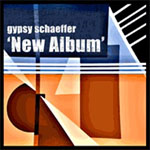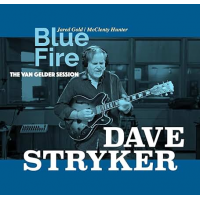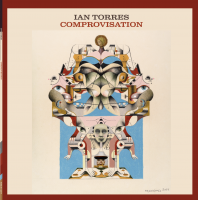Home » Jazz Articles » Album Review » Ambrose Field / John Potter: Being Dufay
Ambrose Field / John Potter: Being Dufay
Composer Ambrose Field uses live and studio electronics to reshape the music of the little-known Guillaume Dufay (1397-1474) into fuller constructs, albeit ones that often sound not of this world. Celestial sonics—owing in no small part to the innovations of artists like Brian Eno—turn tenor (and ex-Hilliard Ensemble member) John Potter's plaintive and deeply expressive interpretations of Dufay's largely linear music into something altogether new. For those who feel that electronic music is inherently cold and lifeless, Field's music that wraps around Dufay's melancholic "Je me complains" is as resonant and evocative as any created with conventional instrumentation. From stark soundscapes based around a single pedal point to heavenly choral samples that lead into a lushly dramatic three-chord change that places Potter's processed vocal back in the mix before returning to a starker ending with Potter the dominant voice, this is music created by the heart as much as the mind.
Field and Potter assert that all music lives and breathes, and can be grist for new and creative reinterpretation. On the lengthy title track, Field and Potter create an ethereal soundscape of jagged textures and softer melodies. Like plainchant, Potter's primary melody is monophonic, without measured rhythm, allowing him greater interpretive freedom, even as Field layers Potter's own voice and an array of other sonorities to create an aural landscape best experienced rather than simply heard. Throughout the 12 minutes, Potter's clear voice emerges as a kind of focal point, around which Field's combination of musical and found sounds create an expansive sense of space, meant to create a sense of scale not unlike, as he writes in the liner notes, "a human figure...introduced into a vast architectural scene for measurement purposes."
If any of this sounds unapproachable, it isn't. All that's required, when listening to Field and Potter, are an ear and mind open to any and all possibilities. With Being Dufay they've shaped a classic contemporary work, placing music on a timeless continuum of in perpetuity existence.
Track Listing
Ma Belle dame souveraine; Je me complains; Being Dufay; Je vous pri; Presque quelque chose; Sanctus; La dolce vista.
Personnel
John Potter: tenor; Ambrose Field: composer, live and studio electronics.
Album information
Title: Being Dufay | Year Released: 2009 | Record Label: ECM Records
Tags
PREVIOUS / NEXT
Support All About Jazz
 All About Jazz has been a pillar of jazz since 1995, championing it as an art form and, more importantly, supporting the musicians who make it. Our enduring commitment has made "AAJ" one of the most culturally important websites of its kind, read by hundreds of thousands of fans, musicians and industry figures every month.
All About Jazz has been a pillar of jazz since 1995, championing it as an art form and, more importantly, supporting the musicians who make it. Our enduring commitment has made "AAJ" one of the most culturally important websites of its kind, read by hundreds of thousands of fans, musicians and industry figures every month.

















